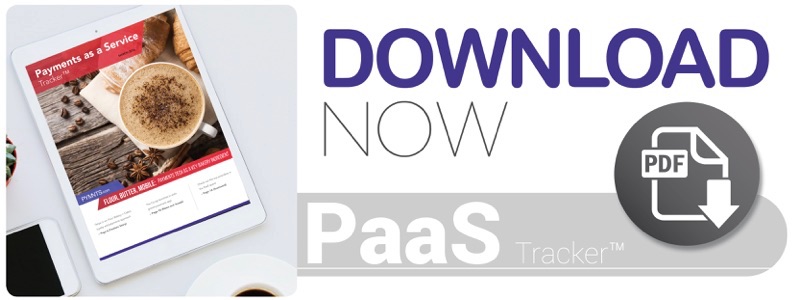Flour, Butter, Mobile: Payments Tech As A Key Bakery Ingredient
Managing payments and the POS isn’t exactly why bakers go into the bakery business. But catering to a mobile-savvy customer base means going beyond just serving coffee and bread, says Tanya Li, assistant director of Boston-based Flour Bakery + Café. In the latest Payments As A Service Tracker, Li told PYMNTS why for the seven-store chain, staying in the game meant thinking more strategically about payments and apps, such as loyalty, rewards and online ordering — but leaving the heavy lifting of getting it done to someone else.
Today, the average passerby on the street is likely to be holding a mobile phone, a coffee cup or both.
Cafés are taking note and are turning to mobile ordering, payments and digital loyalty programs to keep up with their online-savvy customers’ demands. Though big-name coffee and bakery giants like Starbucks and Dunkin’ Donuts have captured headlines with their latest digital efforts, smaller cafés are far from being left behind when it comes to adopting technology and embracing digital methods.
PYMNTS recently spoke with Tanya Li, assistant director of operations for Boston area-based Flour Bakery + Café, to get the scoop on how the seven-store operation is evolving its payments and loyalty program to stay competitive.
Picking a Payment System
For this smaller-sized bakery chain, brewing up the right payments solution meant carefully choosing the software that could best support both its business model and its vision.
Flour’s “right solution” has changed over time. The company made a switch in how it handled its payments in the summer of 2016, abandoning the restaurant point-of-sale (POS) software it had used for several years and choosing an offering from a different provider. The café reached a point where it needed to streamline its payment processes, Li explained; the new software included features the company hoped would help achieve more efficiency: enabling customers to write their signatures on-screen, allowing staff to print real-time tickets for orders and accepting online orders, among other things.
Given the bakery’s sizeable array of offerings, it was also necessary that the POS software could store Flour’s menu in the cloud and update that menu on demand.
“A big thing for us is, our menu is very large,” Li said. “We needed a POS system that would be robust enough to handle the very large menu and the amount of orders that come through.”
Another benefit of the software was the ability to offer digital gift cards, which become very popular around the holidays, she added.
An Appetite for Apps
Flour launched with one storefront in 2000 and has since grown to seven. By 2017, it was receiving so many phone orders that the company decided to release an app with digital ordering features to help manage demand. The app gave guests a quicker digital ordering option, allowed them to use saved payment information and freed up staff from taking down phone orders.
“We’ve definitely been able to take on more lunch orders that way,” Li said. “The online ordering has allowed us to help more people during lunch, to take on more orders, where before we were pretty thoroughly limited by being only able to take phone orders.”
Breakfast and lunch are hot times for a café, and Flour is no exception. On average, its slowest venue takes in approximately $5,000 per day, and it’s busiest sees $20,000. The latter handles more than 100 orders daily, and the app user base has hit 8,400 and is still growing.
While the popularity of mobile order-ahead has meant reworking staff flow, it hasn’t yet required changes to Flour’s store layout. The company aims to increase digital ordering and its base of app users, driving a lot of traffic without imposing a significant labor burden on staff, Li explained.
“Having an app is a great way [for café and bakeries] to remain competitive in the market,” she noted.
But getting there didn’t mean building the app from scratch. As with its POS system, Flour turned to services from a larger provider, choosing local mobile ordering and payments platform LevelUp to build its offering. Joining an existing platform had certain advantages, Li said, as many customers were already familiar with the platform and had preexisting accounts.
“We have people who want to use LevelUp — more people than Apple Pay,” she noted.
The business currently accepts payment methods such as Samsung Pay, cards and cash — no Apple Pay yet — but Li said credit card is the most popular payment method by far.
From Regular to Repeat, Through Loyalty and Rewards
Flour was determined to offer multiple reward options to turn regular customers into repeat customers. And so, the company created two programs: one that is based on visits, rewarding patrons on the number of times they come into a store, and one that is based on spending, earning them store credit for every $100 spent.
The goal of both offerings was to achieve the right vibe.
“We wanted to offer a loyalty program with that same … online ordering experience that matches the level of hospitality that’s in the bakeries themselves,” Li said. “We wanted the app to be friendly and easy to use [and] in line with our branding.”
The company also found success with digital gift cards that customers can send through email or text. Flour plans to build on these types of ideas, with future features enabling customers to digitally gift friends with specific bakery items, like a sticky bun. Other features reinforce the company’s mission, allowing customers to add a donation to a charity or nonprofit of the month onto their purchasing orders, Li said.
As long as customers have a taste for mobile, Flour Bakery + Café will continue to bake up new digital solutions.

